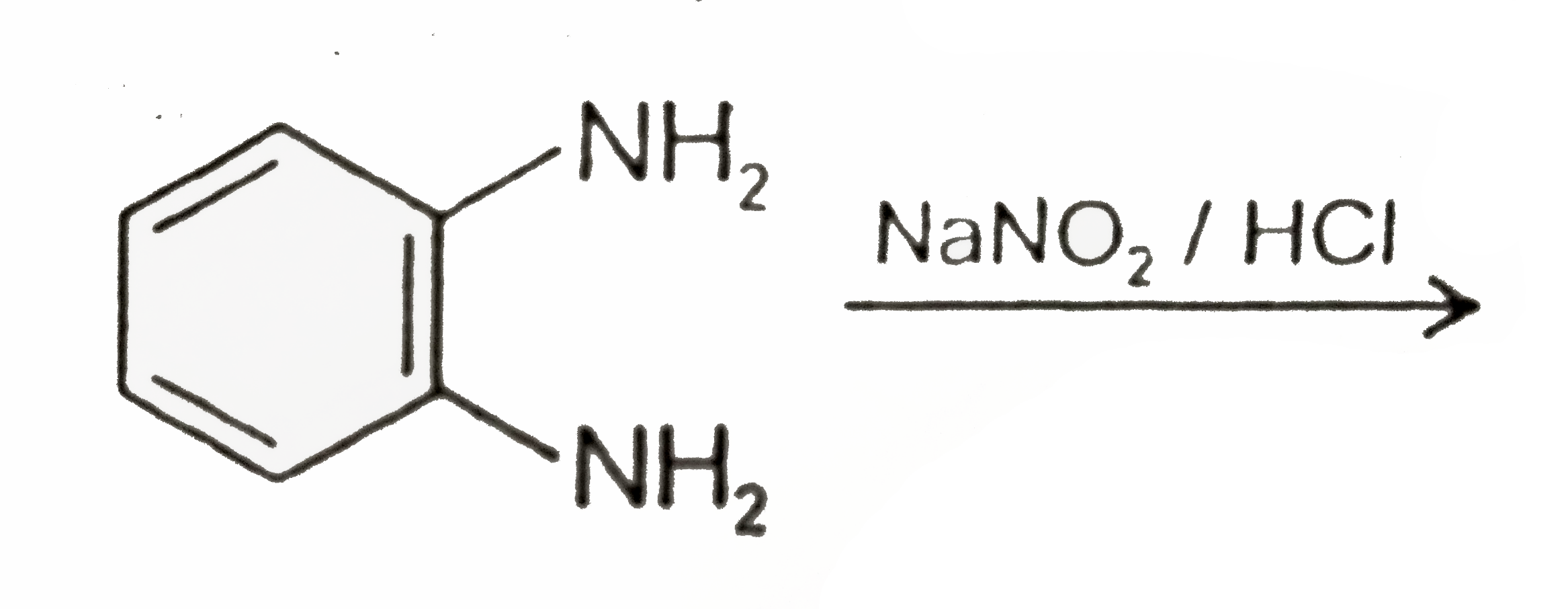The conversion of primary aromtatic amines in to diazonium salts is known as
Step-by-Step Solution:
1. Understanding the Reaction: The conversion of primary aromatic amines into diazonium salts involves a specific chemical reaction where the amine group (-NH2) of the aromatic compound is transformed into a diazonium group (-N2+).
2. Identifying the Reactants: The primary aromatic amine, such as aniline (C6H5NH2), is the starting material. This amine will react with sodium nitrite (NaNO2) in the presence of a mild acid.
3. Choosing the Acid: A mild acid such as hydrochloric acid (HCl) is typically used in this reaction. The acid helps to protonate the nitrite ion, facilitating the formation of the diazonium salt.
4. Reaction Conditions: The reaction is carried out at low temperatures, usually between 0°C to 5°C. This is important to stabilize the diazonium salt formed, as they are generally unstable at higher temperatures.
5. Formation of Diazonium Salt: When the primary aromatic amine is treated with sodium nitrite and hydrochloric acid under the specified conditions, the diazonium salt is formed. For example, aniline reacts to form benzene diazonium chloride (C6H5N2Cl).
6. Naming the Reaction: This specific conversion of primary aromatic amines into diazonium salts is known as the diazotization reaction.
Final Answer: The conversion of primary aromatic amines into diazonium salts is known as the diazotization reaction.
---
Topper's Solved these Questions
- XII BOARDSBOOK - XII BOARD PREVIOUS YEAR PAPER ENGLISHCHAPTER - XII BOARDSEXERCISE - Outside Delhi : SET-II
13 Videos
- XII BOARDSBOOK - XII BOARD PREVIOUS YEAR PAPER ENGLISHCHAPTER - XII BOARDSEXERCISE - Outside Delhi : SET-III
13 Videos
- XII BOARDSBOOK - XII BOARD PREVIOUS YEAR PAPER ENGLISHCHAPTER - XII BOARDSEXERCISE - C.B.S.E. CLASS - XII
30 Videos
- SAMPLE PAPER 2019BOOK - XII BOARD PREVIOUS YEAR PAPER ENGLISHCHAPTER - SAMPLE PAPER 2019EXERCISE - SECTION: D
1 Videos
Similar Questions
Knowledge Check
The presence of primary amine can be confirmed by its
reaction with :AHNO2BCHCI3+NaOHCCS2andHgCI2DH2SO4Conversion of phenol to salicylic acid and to salicyaldehyde are known as (respectively)
AReimer-Tiemann reaction and Kolbe's reactionBWilliamson's synthesis and Hydroboration- oxidationCKolbe's reaction and Williamson's synthesisDKolbe's reaction and Reimer- Tiemann reaction
Conversion of Methyl amine into ethyl alcohol
View SolutionWhat reaction is used for converting a primary amide into a primary amine containing one carbon atom less than the parent amide ?
View SolutionTreatment of primary amines with nitrous acid gives diazonium ions. Aliphatic diazonium ions decompose under the diazotization conditions to give complex mixture of products. Aryldiazonium ions are stable and is a valubale intermediate. They react with activated aromatic compounds to give coupling product.
What would be the product of the given reaction?

View SolutionConversion of ions into neutral species is known as
View SolutionTreatment of primary amines with nitrous acid gives diazonium ions. Aliphatic diazonium ions decompose under the diazotization conditions to give complex mixture of products. Aryldiazonium ions are stable and is a valubale intermediate. They react with activated aromatic compounds to give coupling product.
At what pH phenol reacts with benzene diazonium chloride to give coupling product?
View SolutionThe reaction of primary amine with chloroform and ethanolic solution of KOH is called:
View Solution

 , the reaction is known as
, the reaction is known as